









| Green Woodpecker (Picus viridis (Linnaeus, 1758)) |










|
|
Scientific name: Picus viridis (Linnaeus, 1758) Common name: Green Woodpecker French name: Pic vert Order: Piciformes Family: Picidae Size: 31 to 33 cm; 180 to 200g. Habitat: Open woodlands, woodland edges, hedgerows, parks and gardens. Food: The Green Woodpecker mainly feeds on the ground where it picks insects and larvae. Ants represent more than 90% of its food. Nesting: The nest is a 20 to 50 cm deep hole inside a tree's trunk. There is only one brood per year. The female lays 5 to 8 eggs. Migration: Resident. Geographic area: Europe except extreme North, Asia Minor. |
The Green Woodpecker is green above and greyish-green below the body. The rump is yellow and the top of the head is red. The male bears a red moustache, the female's one is black. The Green Woodpecker emits a loud call which sounds like a laugh. The Green Woodpecker's flight is wavy like other picidae's flight . |
| [To know more about the Green Woodpecker] [Next picture] [Top] |
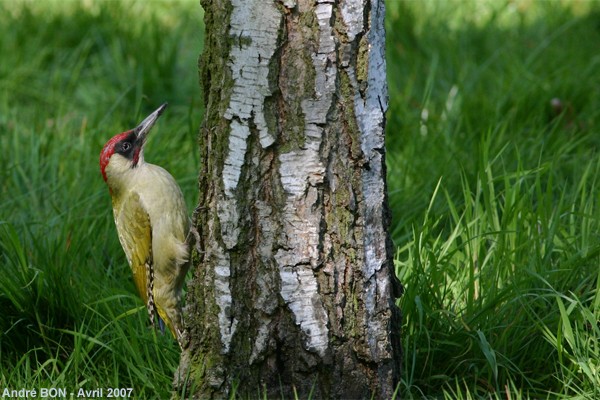
|
One hour in Hyde Park was enough to shoot a nice series of Green Woodpecker's pictures. |
| [To know more about the Green Woodpecker] [Next picture] [Previous picture] [Top] |
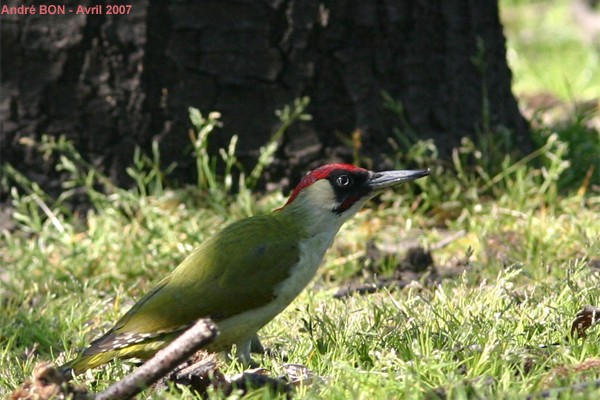
|
You usually observe Green Woodpeckers on the ground where they are used to feeding. |
| [To know more about the Green Woodpecker] [Next picture] [Previous picture] [Top] |
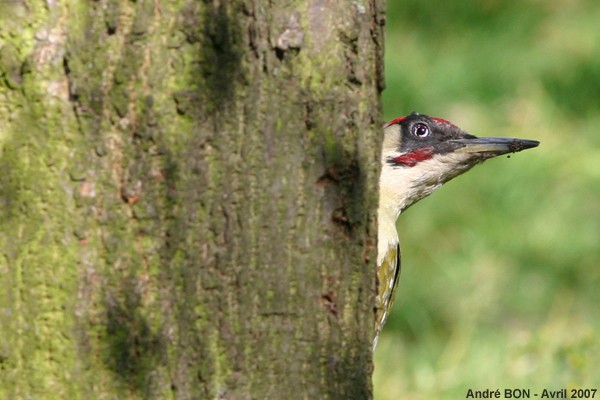
|
If the Green Woodpecker flies away when you get close, it hides behind a trunk from where it looks at you. If a walker comes near on the other side, then the Green Woodpecker will forget about you and will come to hide just in front of you. It is then very easier to shoot pictures. |
| [To know more about the Green Woodpecker] [Next picture] [Previous picture] [Top] |
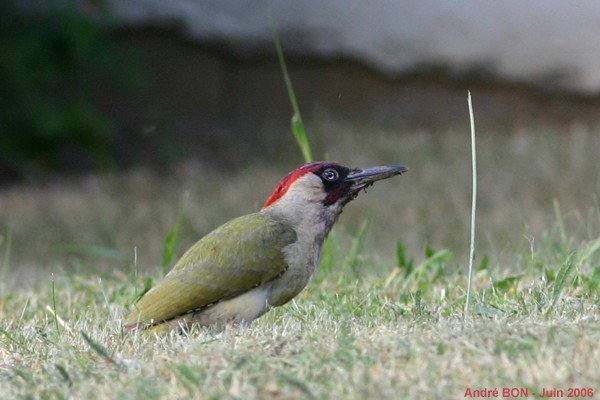
|
There must be an ants' nest in the small lawn in front of my home. |
| [To know more about the Green Woodpecker] [Next picture] [Previous picture] [Top] |
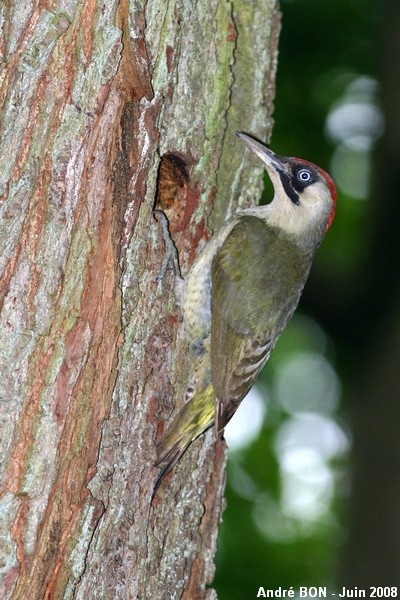
|
I have seen a Great Woodpecker in flight while I was walking thru the forest, rather far from any footpath. After a small look at the trees in the neighbourhood I found an oak tree with several woodpecker's holes. One of them seemed quite new. I have installed the camera on the tripod with a wired remote control. I have waited about a quarter of an hour, perfectly hidden about fifteen meters away under a dense bush. No woodpecker at all. Only a few Nuthatches, landed higher on the tree and disappeared behind the trunk. I have not waited longer. A longer wait could have caused problems to the brood in case the woodpecker was sitting on the eggs. I have also discovered the Nuthatch nesting hole when I left. I have been able to shoot a series of pictures the week after. I came back here about three weeks later. Sticking my ear on the trunk, I found that a brood was growing inside the woodpecker hole. I have installed the camera and the remote control again. I took great care to my camouflage and waited at distance. I have been able to shoot two series of pictures when the adults came to feed the brood. There is about half an hour of delay between two feeding sessions. I have not noticed any disturbance caused by my presence as each sound signal emitted by an adult flying back to the nest was always followed by a feeding session in the hole. I left just after the second session as it is never good to wait near a nest. |
| [To know more about the Green Woodpecker] [Next picture] [Previous picture] [Top] |
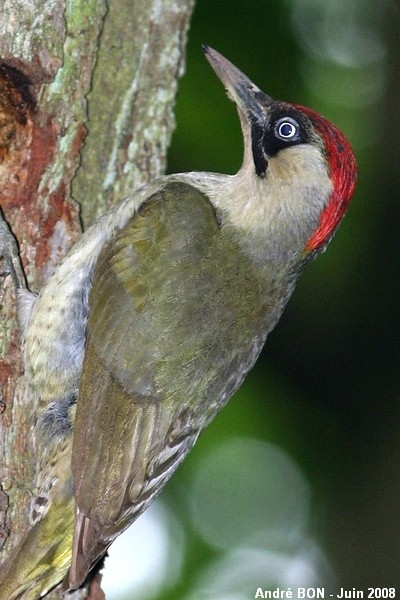
|
One of the main difficulty about using a remote control system is to predict precisely where the bird will be standing. For this photo session under the shadow of the foliage, I have used the flash light to be able to set a lower aperture and increase the depth of field. The black moustache of this woodpecker indicates that this one is a female. |
| [To know more about the Green Woodpecker] [Next picture] [Previous picture] [Top] |
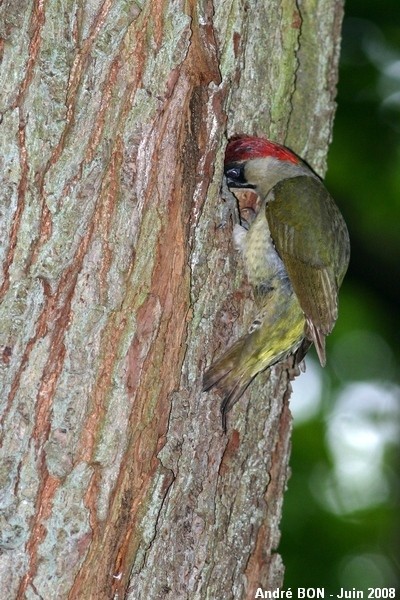
|
The beakfull of ants and ant larvae is given to the young woodpeckers which were quietly and rather noiselessly waiting. Young Great Spotted Woodpeckers are often much more noisy. |
| [To know more about the Green Woodpecker] [Next picture] [Previous picture] [Top] |
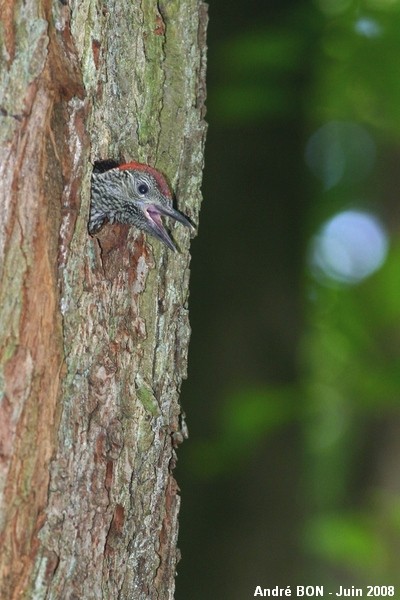
|
My plan, at the end of this photo session with wired remote control and good camouflage, was to get pictures of adult Green Woodpeckers feeding the juveniles. I have not been successful as the adults, may be scared by the too much visible camera, did not come to the nesting hole. I did not try more than one hour and I will try again next year. I did not get back home empty-handed as I have been able to shoot some pictures of young Green Woodpeckers. |
| [To know more about the Green Woodpecker] [Next picture] [Previous picture] [Top] |
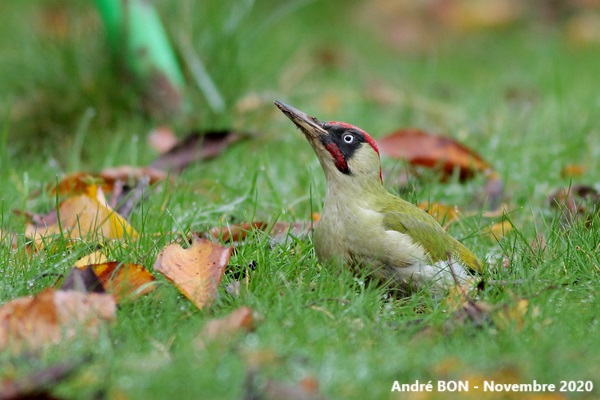
|
This male Green Woodpecker (red moustache) must have found an anthill to feed in my garden. Its regular visits to the same place allowed me to position myself on the lookout to take a photo of it and I didn't wait long for its return. |
| [To know more about the Green Woodpecker] [Previous picture] [Top] |
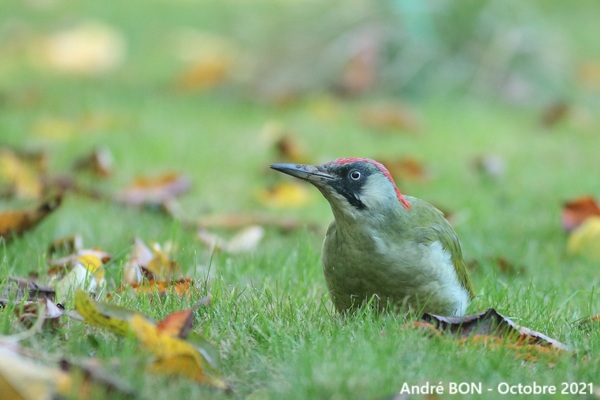
|
Here we are at the same location as last year and this time it is Madam (black moustache) which came to the anthill. |